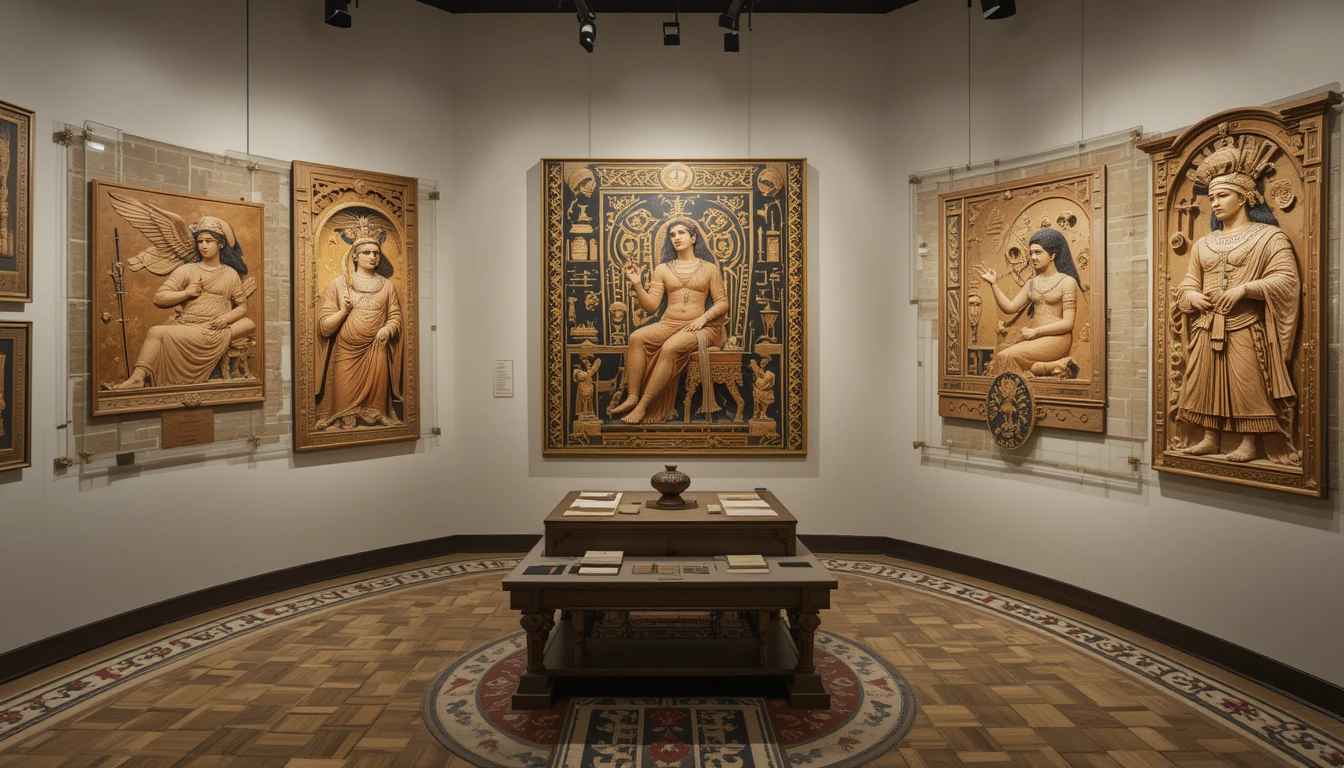
Ancient Artz: Preserving the Legacy of Ancient Craftsmanship
In the vast and intricate tapestry of human history, the evolution of art has been a central theme that reflects the culture, identity, and ingenuity of civilizations past. Art has always served as a window into the soul of ancient societies, encapsulating their values, beliefs, and everyday experiences. One of the most fascinating and often underappreciated aspects of this history is “Ancient Artz” – the craftsmanship that has stood the test of time, surviving centuries and even millennia. This article delves into the concept of Ancient Artz, its preservation, and its cultural significance.
What is Ancient Artz?
“Ancient Artz” refers to the traditional forms of craftsmanship and artistic expression created by ancient civilizations, often encompassing a range of media such as pottery, sculpture, painting, metalwork, textiles, and more. These pieces of art were usually designed not only for aesthetic enjoyment but also for ceremonial, religious, or functional purposes. The term “Artz” here is used to signify the unique, skilled, and highly valued nature of these ancient crafts. These works of art offer us a glimpse into the lives of people who lived long before us and have left behind a rich legacy that we continue to study, admire, and preserve.
The Significance of Ancient Art
The significance of Ancient Art goes beyond just beauty. Each artifact, whether it’s an intricately painted vase, a towering sculpture, or a finely crafted weapon, tells a story of the culture and people who created it. These works of art reveal the social, political, and economic contexts of their time. For example, ancient Greek pottery often depicted scenes of daily life, warfare, or religious rituals, serving as both decorative pieces and historical records. Similarly, the stunning metalwork of ancient Egypt showcases the civilization’s advanced technology and its deep connection to religion and the afterlife.
In other ancient societies, such as in Mesopotamia and the Indus Valley, the artistry on everyday objects provided insight into their trading practices, technological advancements, and religious practices. These artifacts were not only tools but also representations of their creators’ values, beliefs, and aspirations.
Ancient Artz thus serves as an irreplaceable record of human history. Without these artifacts, much of what we know about our ancient ancestors would be lost. reserving them is essential to maintaining a connection to our shared heritage.
Preserving the Legacy of Ancient Artz
Preserving Ancient Artz is no small task. These artifacts are often made from delicate materials that can deteriorate over time. Pottery, for instance, can chip or crack, while textiles can fade and rot. Over centuries, exposure to the elements, human interaction, and even natural disasters can significantly damage these artifacts. As such, the preservation of Ancient Art requires a multi-faceted approach that combines careful conservation, modern technology, and a commitment to protecting our cultural heritage.
1. Conservation Techniques
Conservation of ancient artifacts is a highly specialized field that involves restoring and stabilizing artworks to prevent further decay. For example, pottery and sculptures may undergo cleaning processes to remove dirt and grime, followed by sealing treatments to prevent further corrosion. In the case of paintings or textiles, experts use state-of-the-art technology to scan, repair, and preserve them without altering the original appearance.
Some techniques include using chemical treatments to slow down the aging process of materials, repairing cracks or tears with acceptable, non-invasive methods, and even reconstructing missing pieces. However, conservation experts must ensure that these techniques do not compromise the authenticity or historical integrity of the artwork.
2. Digital Preservation
In recent years, digital preservation has become an invaluable tool for safeguarding Ancient art. Through high-resolution photography, 3D scanning, and digital modeling, experts can create accurate representations of ancient works that can be studied, shared, and even restored digitally without risking harm to the original. This approach not only helps protect the physical integrity of these items but also makes them accessible to people worldwide through virtual galleries and museums.
Digital preservation also plays a vital role in research and education. Scholars and students can explore these ancient pieces remotely, without the need to travel to distant museums or archaeological sites. This democratization of art and history ensures that the legacy of Ancient Artz can continue to inspire future generations, regardless of geographical location.
3. Museums and Archaeological Sites
Many of the world’s most valuable Ancient artifacts are housed in museums and protected archaeological sites. These institutions play a critical role in preserving these pieces and educating the public about their cultural significance. Museums dedicate considerable resources to the climate-controlled storage of artifacts, ensuring that temperature and humidity levels remain stable to prevent degradation. Display techniques also minimize exposure to light and air, which can cause irreversible damage over time.
Archaeological sites, on the other hand, are often protected through physical barriers and careful excavation practices. Excavators and archaeologists are trained to handle artifacts with the utmost care to avoid unnecessary damage. Once artifacts are uncovered, they are carefully transported to conservation labs for analysis and preservation.
4. Public Engagement and Awareness
Another crucial aspect of preserving Ancient Artz is public engagement and awareness. Without a widespread understanding of their importance, the drive to protect and preserve these artifacts can wane. Governments, non-profit organizations, and educational institutions have undertaken initiatives to raise awareness about the significance of Ancient Artz.
Campaigns and events, such as art exhibitions, educational workshops, and archaeological digs open to the public, allow people to connect with ancient craftsmanship firsthand. These experiences help foster a sense of responsibility toward preserving our shared history, ensuring that future generations appreciate the legacy of their ancestors.
Challenges in Preserving Ancient Art
While the preservation of Ancient Art is vital, it is not without its challenges. Some of the most pressing concerns include:
- Looting and Illegal Trade: The illegal trade of ancient artifacts is a significant issue that threatens the preservation of Ancient artifacts. Many valuable pieces are stolen from archaeological sites and sold on the black market, where they are often lost to history forever.
- Climate Change: Rising temperatures, changing humidity levels, and more frequent natural disasters pose a significant threat to the survival of ancient artifacts, especially those housed outdoors or in vulnerable areas.
- Funding and Resources: Preserving Ancient Art requires substantial financial investment, and not all countries have the resources necessary to maintain their cultural heritage. This issue is compounded in regions affected by political instability or economic hardship.
The Future of Ancient Art Preservation
The future of Ancient Artz preservation lies in the continued advancement of conservation technologies, international cooperation, and public involvement. As more archaeological sites are discovered and more ancient works of art are uncovered, it will be essential for global communities to collaborate in preserving these invaluable artifacts for future generations.
Additionally, as technological advancements such as artificial intelligence, machine learning, and augmented reality develop, we may see even more innovative ways to study, conserve, and share Ancient Artz, ensuring that their legacy remains intact.
Conclusion
Ancient Artz offers us a profound glimpse into the cultural, social, and spiritual lives of our ancestors. These artifacts, whether in the form of sculpture, pottery, textiles, or metalwork, carry the stories of ancient civilizations, offering insights that continue to shape our understanding of history. Preserving these works of art is not just about safeguarding objects; it’s about protecting our shared heritage and ensuring that the wisdom, creativity, and craftsmanship of past generations can continue to inspire future ones. As we look to the future, it is clear that the preservation of Ancient Art will remain a vital endeavor in the continued exploration of humanity’s artistic and cultural legacy.




